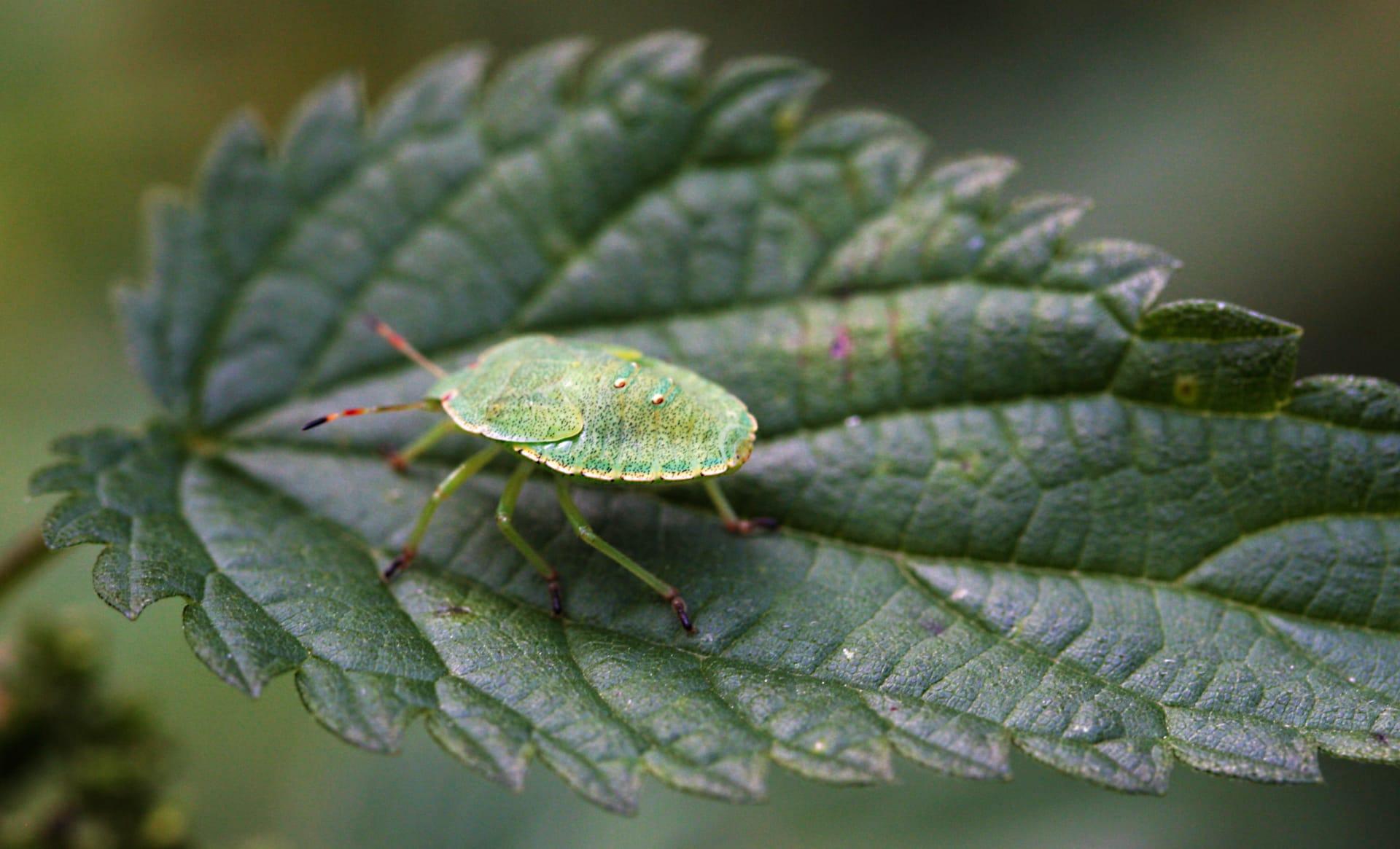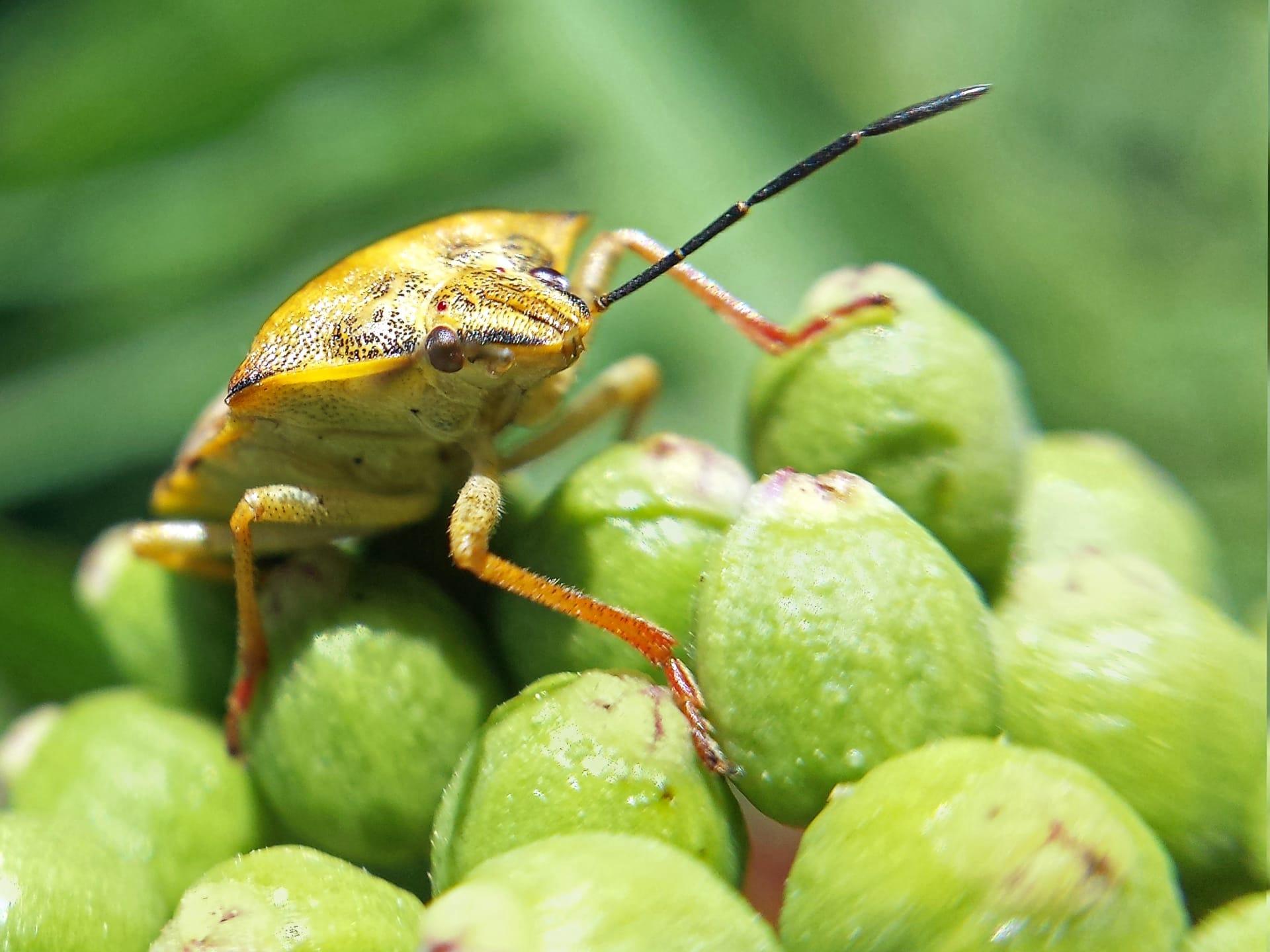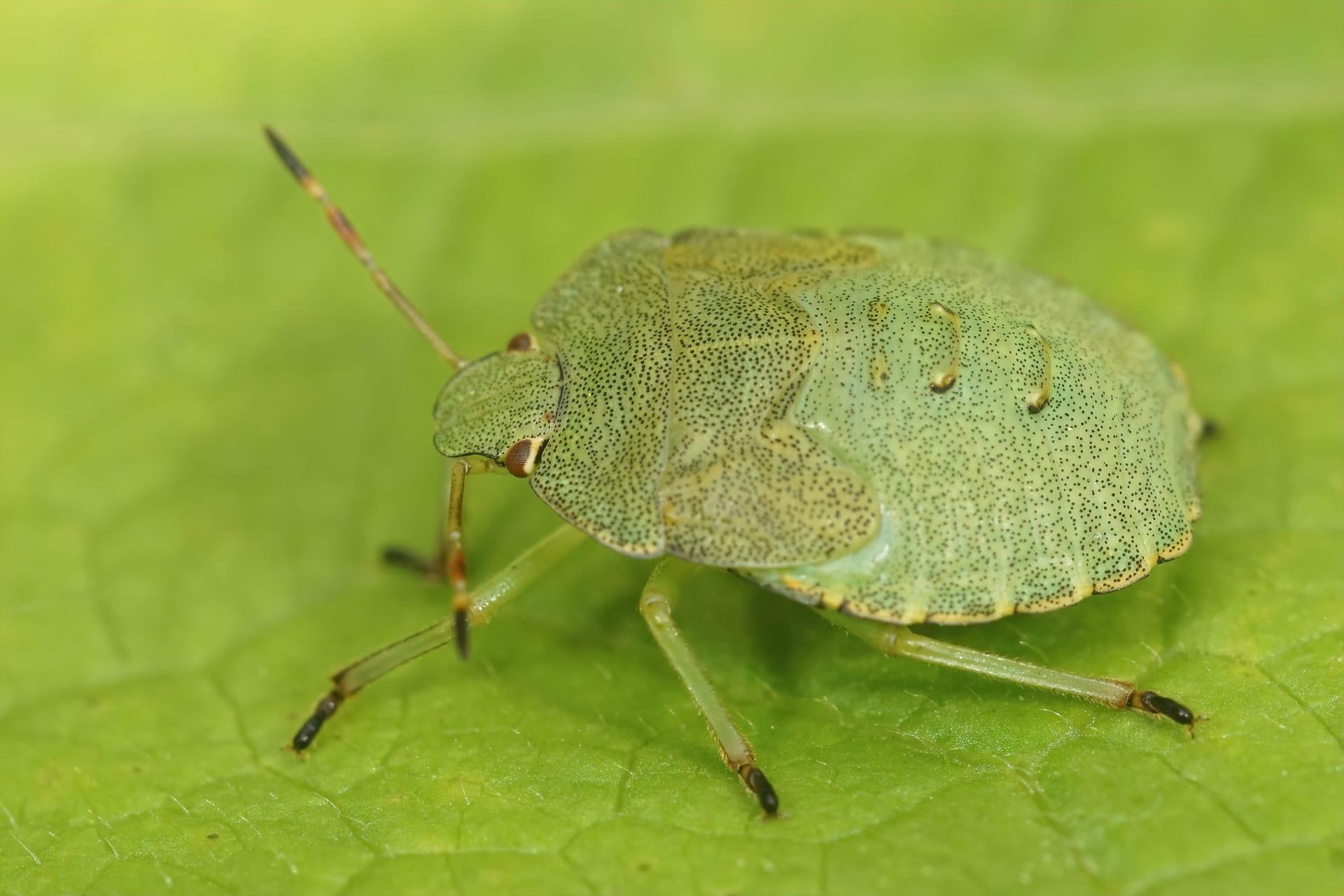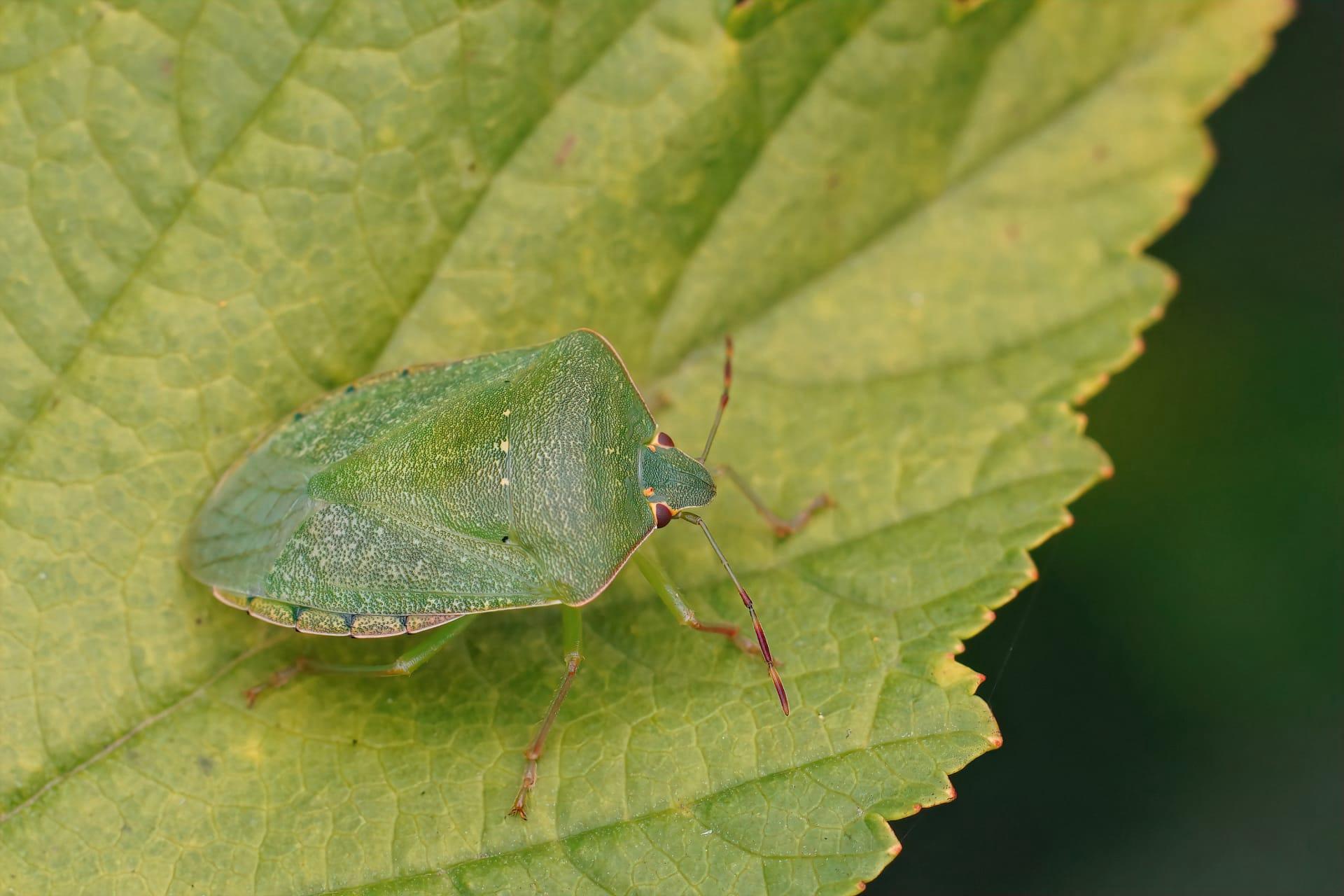Green Shield Bug
- Home /
- Mini Encyclopedia /
- Animal /
- Green Shield Bug
1
The Green Shield Bug, scientifically known as Palomena prasina, belongs to the family Pentatomidae within the order Hemiptera. This family is characterized by their shield-shaped bodies and the stink glands located on their abdomen, which are responsible for their distinct odor. The Green Shield Bug, in particular, is known for its vibrant green color, which can vary in shade depending on the season and the bug's life stage.
As for its distribution, the Green Shield Bug is native to parts of Europe and Asia. However, its range has expanded, and it's now found in many regions, including the UK, France, Germany, Italy, and parts of Scandinavia. It thrives in temperate climates and is commonly found in gardens, parks, and woodland edges. The bug's presence in these areas is often noticeable from late spring to early autumn, with a peak in sightings during the summer months.

2
Question: Do Green Shield Bugs pose a significant threat to agricultural crops?
Answer: Contrary to popular belief, Green Shield Bugs are not major agricultural pests. While they do feed on a variety of plants, their impact is minimal in most cases. They use their piercing-sucking mouthparts to extract sap from a wide range of plants, including beans, peas, and various fruits. However, the damage they cause is usually limited to slight discoloration or deformities in fruit and leaves, which is generally not harmful to the overall health of the plants. In fact, they are more often seen as a nuisance in gardens rather than a serious threat to crops.

3
One of the primary survival strategies of the Green Shield Bug is its coloration. The bright green color provides excellent camouflage among leaves and plants, making it difficult for predators to spot them. This form of camouflage is especially effective during the spring and summer when foliage is abundant. In addition to its color, the Green Shield Bug undergoes a change in hue as the seasons shift, turning to a darker, brownish color in autumn, aligning with the changing colors of the foliage.
Another survival tactic is the bug's notorious stink glands, which release a pungent odor when the bug feels threatened. This odor is a deterrent to many predators, including birds and small mammals. The scent is also a social signal to other Green Shield Bugs, potentially indicating danger or helping in the aggregation of groups during colder periods, which is a common behavior observed in these insects.

4
In the ecosystem, Green Shield Bugs play a role as both prey and predator. While they are a food source for birds, small mammals, and other insects, they also help control the population of other smaller insects and arthropods by preying on them. This predatory behavior is more pronounced in their nymph stages.
Additionally, Green Shield Bugs contribute to the pollination process inadvertently. As they move from plant to plant feeding on sap, they can carry pollen, aiding in the cross-pollination of various plant species. This, in turn, benefits the biodiversity of plant life in their habitat, although it's important to note that this is not their primary ecological role.

5
Film: "Insect Worlds: The Secret Life of Bugs" is a documentary series produced in the UK in 2013. One episode features the Green Shield Bug, highlighting its life cycle and survival strategies. The documentary provides a close-up look at the bug's habitat, feeding habits, and the challenges it faces in different seasons.
Book: "The Hemiptera: True Bugs of the World" by Randall T. Schuh and Christiane Weirauch, published in the United States in 2020, offers an in-depth exploration of the Hemiptera order, including a section dedicated to the Green Shield Bug. The book details its anatomy, behavior, and the ecological significance of this and other similar species.
Book: "Garden Insects of North America" by Whitney Cranshaw, published in the United States in 2017, provides a comprehensive guide to garden insects, including the Green Shield Bug. This book focuses on the identification, life cycle, and management of various insects found in North American gardens, offering practical advice for garden enthusiasts and professionals alike.